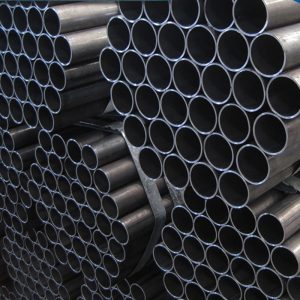Welded steel pipe processing technology
As the requirements imposed on steel products continues to increase, not only were the associated manufacturing processes constantly improved, but also appropriate systems for effective production control and quality assurance were introduced. Nowadays, steel pipe manufacturers in China all have a system in place enabling the production process from the steelworks to the finished tube to be continuously monitored and documented for total traceability, and effectively controlled on specifications are carried out by personnel operating independently from the production control department so as to guarantee product of a constantly high quality.

The production of welded steel pipe initially involves the continuous forming of strip, sheet or plate in roll stands or in presses. The strip may also be cold-formed on a three-roll bending machine and subsequently welded by pressure or fusion welding to produce the finished tube in a mill. Depending on the forming process, a distinction is made between longitudinally welded and spiral-welded tube that may also be referred to as helical seam pipe in the current steel pipe market. For example, when manufacturing high-alloy tube, the starting material is normally drilled, re-heated and the bore is then expanded to the required inside diameter, which is usually by means of an upstream press. Following temperature equalization, this tube blank is then inserted in the extruder to produce the final tube dimensions.
Tianjin steel pipe extrusion process is employed for manufacturing tubes up to approx. 230mm outside diameter. The usual starting material takes the form of round steel billets/blooms, rolled, forged or continuously cast, with diameters up to 300 mm. And following heating to forming temperature, the starting material is inserted in the cylindrical recipient of the extruder, which features a round-bored die in its bottom. The bloom is initially pierced through the center by a mandrel driven by a hydraulic ram. As the piercing mandrel passes through the die, it forms an annular gap through which the material is extruded under the pressure exerted by the ram to form the tube. The material remaining in the extruder is subsequently cut from the tubes as recyclable discard. With reference to cold rolled steel pipe, the main purpose of cold working processes is to achieve closer wall thickness and diameter tolerances, an improvement in surface finish and specific mechanical properties in the steel pipe. Besides, cold forming also serves to expand the product mix toward the lower end of the OD and wall thickness scales.
Tel: +86 18202256900 Email: steel@tjdpbd.com









